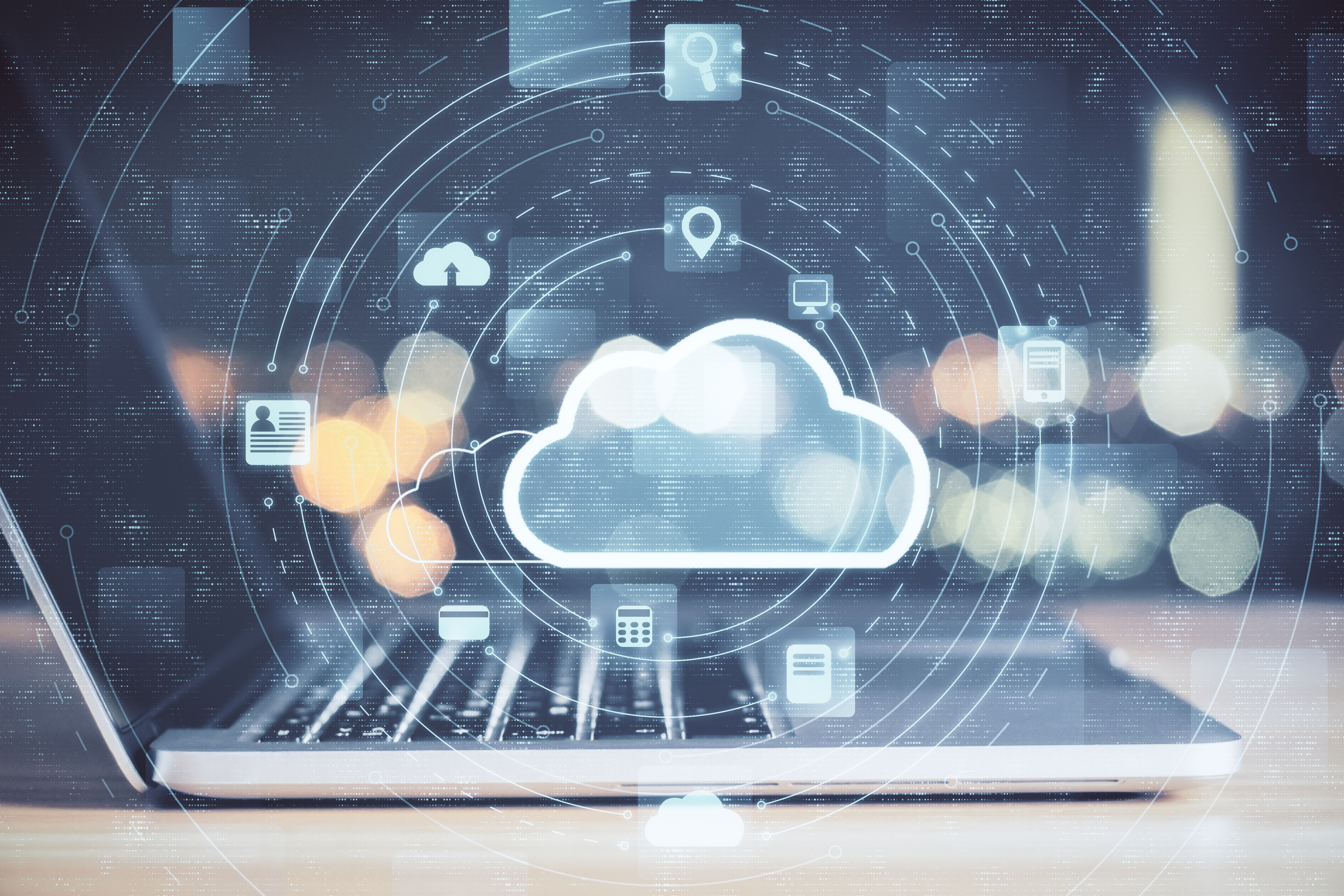Ed Tech Blog

The education landscape is undergoing a profound transformation, with private and independent schools increasingly turning to cloud technology to modernize their operations, improve learning outcomes, and maintain a competitive edge in an ever-evolving world. Cloud adoption offers a myriad of benefits, ranging from cost savings and enhanced scalability to improved collaboration and accessibility. By leveraging cloud solutions, schools are better equipped to meet the demands of contemporary education while positioning themselves for future growth.
Schools today face mounting pressure to innovate and provide flexible, efficient, and inclusive learning environments. Cloud technology emerges as a crucial enabler, addressing these challenges with tailored solutions that streamline administrative processes, safeguard sensitive data, and support personalized education. The shift to the cloud is more than a technological upgrade; it is a strategic decision that allows schools to redefine how education is delivered and experienced.
In addition to operational advantages, moving to the cloud fosters inclusivity and connectivity. It bridges traditional barriers to education, enabling schools to cater to a diverse and tech-savvy student population. This comprehensive guide explores the transformative benefits of cloud technology, illustrating why it is an essential step for private and independent schools striving to excel in today's dynamic educational landscape.
Enhanced Accessibility and Collaboration
Cloud-based platforms provide unmatched accessibility, empowering teachers, students, and administrators to connect to resources anytime, anywhere. This level of flexibility supports remote learning, hybrid classroom models, and seamless collaboration. By enabling teams to work together in real-time across locations, the cloud transforms traditional teaching and learning paradigms.
Moreover, instant access to up-to-date educational materials eliminates delays and inefficiencies, fostering a dynamic and responsive learning environment. Schools can adapt quickly to curriculum changes and provide students with resources that are both relevant and engaging. By removing geographical barriers, cloud solutions create a more inclusive educational experience, ensuring...
Read more: Transforming Education: How Moving to the Cloud Benefits Private and Independent Schools

Engaging students in the classroom is a constant challenge for educators. One strategy that has stood the test of time for its simplicity and effectiveness is Think-Pair-Share. This collaborative learning technique encourages active participation, critical thinking, and communication skills, making it a valuable tool for any teacher's arsenal. By providing a structured framework for classroom discussions, Think-Pair-Share empowers students to engage with material deeply, fostering an environment where everyone feels heard and valued. Let’s explore how Think-Pair-Share works, why it’s so effective, and how you can implement it to its fullest potential.
What Is Think-Pair-Share?
Think-Pair-Share is a structured approach to classroom discussions that promotes active learning. It involves three straightforward steps that build on each other to create an engaging learning experience. First, the teacher poses a question or problem to the class, allowing students time to think about their answers individually. This reflective stage enables each student to process the material without external influences, encouraging personal engagement with the content. During this period, students are given the opportunity to recall prior knowledge, make connections, and start formulating their own responses.
Next, students pair up with a partner to discuss their thoughts and compare answers. This collaborative phase helps...
Read more: How Think-Pair-Share Transforms Classroom Learning

In the fast-paced world of education, efficiency and communication are key components of a successful learning environment. Schools rely on infrastructure systems such as clocks, bells, and phones to coordinate activities, ensure safety, and keep daily operations running smoothly. Modernizing these systems through infrastructure upgrades can provide significant benefits, enhancing both functionality and reliability.
Why Modernize School Infrastructure?
The traditional systems in many schools were designed decades ago, with limited capabilities compared to today’s technology. Outdated infrastructure can lead to challenges such as inconsistent bell schedules, unclear announcements, and communication gaps during emergencies. Modern upgrades address these issues and offer additional features that better meet the demands of contemporary education.
Modern infrastructure also enables schools to embrace more holistic approaches to time and communication management. For instance, integrated systems ensure a seamless flow of information, minimizing the potential for errors. As education continues to evolve, having reliable and adaptable technology systems becomes increasingly critical for success.
Key Benefits of Infrastructure Upgrades
Synchronization and Accuracy: Upgraded clock systems ensure all timekeeping devices throughout the school are perfectly synchronized. This eliminates discrepancies that could disrupt class schedules or create confusion during events. For schools with multiple buildings or campuses, accurate timekeeping ensures...
Read more: The Impact of Infrastructure Upgrades on School Operations and Safety

In today’s rapidly evolving educational landscape, cloud computing has become a cornerstone for K–12 schools. From virtual classrooms and collaborative tools to administrative systems, the cloud has revolutionized how schools operate and deliver education. The ability to access resources and collaborate in real-time has transformed teaching and learning, making it more flexible and responsive. However, with great technological power comes great responsibility—enter cloud governance.
What Is Cloud Governance?
Cloud governance refers to the framework of policies, processes, and practices that ensure the effective, secure, and compliant use of cloud resources. For K–12 schools, this involves managing how cloud-based platforms are accessed, used, and maintained to protect student data, optimize resources, and comply with legal requirements. The importance of cloud governance cannot be overstated, as it plays a pivotal role in creating a safe and efficient digital learning environment. Without it, schools risk exposing themselves to data breaches, compliance issues, and operational inefficiencies.
Why Is Cloud Governance Crucial for K–12 Schools?
Data Privacy and Security: One of the most pressing concerns for K–12 schools when adopting cloud technologies is data privacy and security. Student data is highly sensitive, and schools are increasingly targeted by cybercriminals seeking to exploit vulnerabilities for profit...
Read more: Cloud Governance in K–12 Schools: Ensuring Security, Compliance, and Efficiency

Helping elementary students express their thought processes is a critical step in building their problem-solving skills, boosting their confidence, and nurturing their intellectual development. When students are able to clearly articulate their reasoning and share their approaches to solving problems, it not only enhances their academic performance but also fosters essential life skills. Encouraging students to show their thinking helps them better understand and retain knowledge, prepares them for more complex tasks, and instills a mindset that values growth and learning. Here’s how educators can guide young learners to show their thinking effectively:
Why Encouraging Students to Show Their Thinking Matters
Explaining their thought process helps students engage more deeply with the material, as they must analyze and synthesize their knowledge to communicate it clearly. This practice allows teachers to identify gaps in understanding and adjust their instruction to better meet the needs of their students. Celebrating the process of thinking and problem-solving, rather than just the final answer, encourages a growth mindset and builds resilience. Students learn that making mistakes is part of the learning process and not a reason to be discouraged. Moreover, when students share their thought processes, they contribute to a collaborative classroom environment that fosters...

Classroom management has always been a cornerstone of effective teaching. With the rise of technology, educators now face unique opportunities and challenges in maintaining a productive and engaging learning environment. As technology continues to redefine nearly every aspect of our lives, classrooms have become microcosms of this transformation. Educators are tasked not only with leveraging these advancements to improve learning outcomes but also with addressing the new complexities they introduce, from digital distractions to equity concerns. By understanding the evolving dynamics of technology use and its implications, teachers can strike a balance between innovation and discipline. Here's how teachers can adapt to the tech era while ensuring effective classroom management, fostering both learning and collaboration.
The integration of technology into education has sparked a new era of possibilities, where learning transcends the walls of traditional classrooms. Virtual field trips, collaborative projects with peers across the globe, and personalized learning pathways are now realities for many students. However, these advancements also necessitate a reevaluation of classroom norms and dynamics. As teachers incorporate these tools, they must navigate challenges that could potentially disrupt the flow of instruction, balancing innovation with the tried-and-true practices that have stood the test of time.
The Role...
